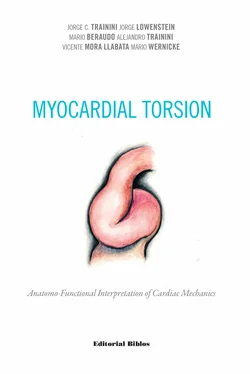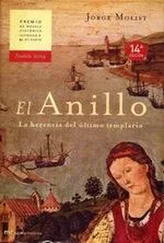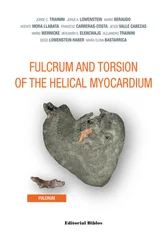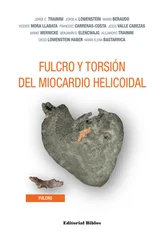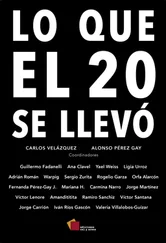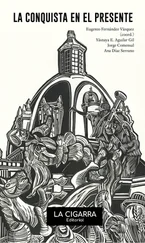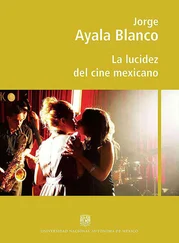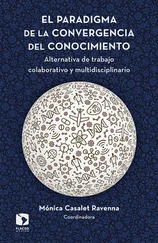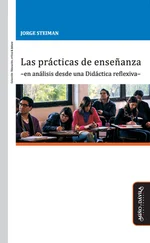Figure 1.35. Festooned cardiomyocytes penetrating the fibro-colagenous matrix (adult human heart).
Figure 1.36. Fibrocolagenous matrix at higher magnification (adult human heart).
At this point, fundamental questions arise. Why does the human fulcrum have characteristics similar to a tendon, despite it fulfills the same function of attaching the myocardial band? Why does it not have the same structure of the fetal or child human heart?
Figure 1.37. Festooned colagenous fibers integrating the fibrotendinous matrix of the fulcrum (adult human heart).
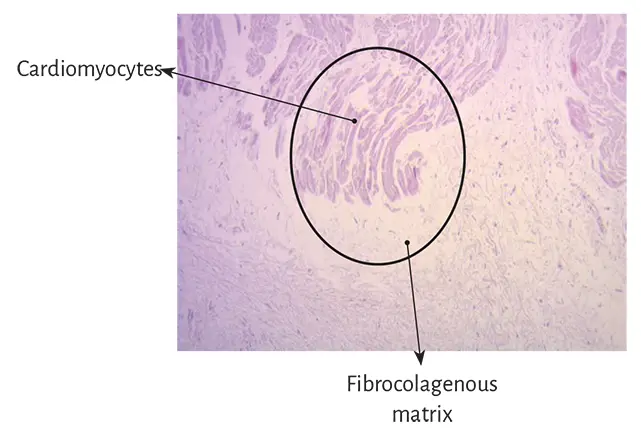
Figure 1.38. Cardiomyocytes penetrating the fibrocolagenous tissue (adult human heart). The circle details the insertion site.
Our interpretation is that perhaps the osseous fulcrum is a vestigial organ specific of mammalian evolution. A vestigial structure must be understood as the preservation during the evolutionary process of genetically established attributes which have lost all or part of their ancestral function in a certain species. (45) As a result, it is found in the initial process of human gestation, but later loses its osseous character, remaining as a tendinous matrix able to achieve myocardial band insertion to attain a muscle power which is much lower than that of larger mammals. Recall that in bovids the fulcrum found in this investigation is of bone nature (Figures 1.28 to 1.30).
Figure 1.39. Collagen tissue and elastoid interstitial tissue are observed. There is no inclusion of cardiomyocytes.
A histological analysis has also been carried out on the trigones trying to find cardiomyocytes in them, as a possibility of insertion of the band in these structures. In our investigation, only collagen tissue was observed without cardiomyocytes in the trigones, confirming that the fulcrum is the support of the band, both in its beginning and in its termination (Figure 1.39).
Fulcrum imaging studies . Bovine hearts studied with computed tomography (Figures 1.40 to 1.42), magnetic resonance imaging (Figures 1.43 and 1.44) and X-rays (Figure 1.45) identified the osteochondral nucleus found in dissection, with the same morphology and analogous size.
Figure 1.40. Computed tomography. A hyperdense, approximately 3.7 cm long image, with 298 HU density is seen in the interventricular septum adjacent to the root of the aorta (bovine heart).
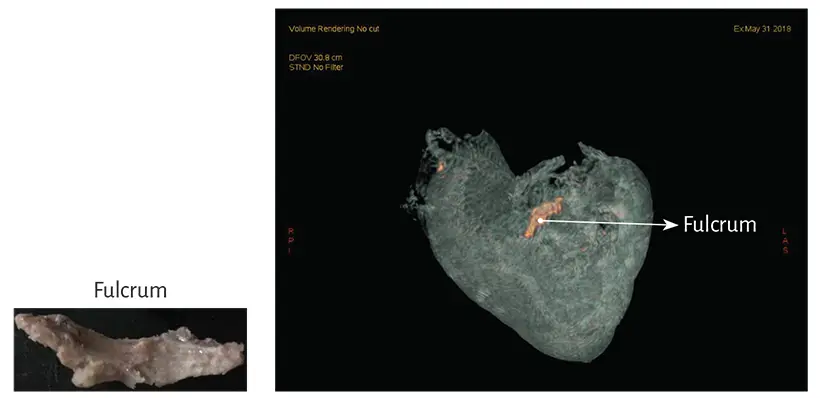
Figure 1.41. Computed tomography of the cardiac fulcrum (bovine heart). The inset shows the resected fulcrum.
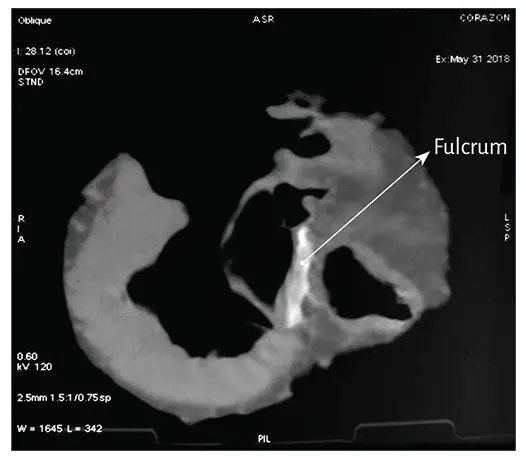
Figure 1.42. Computed Tomography. In the area indicated by the arrow there is an image adjacent to the aortic root on the interventricular septum (bovine heart).
Interpretation . The anterior portion of the cardiac fulcrum is associated with the pulmo-tricuspid cord (Figures 1.15 to 1.17). It is situated between the pulmonary artery and the tricuspid valve and in front of the aortic valve at the level of the right coronary artery, giving rise to the origin of the myocardial band (right segment). Since the right segment separates into two main groups of fibers forming the paraepicardial and paraendocardial bundles, a raphe is defined between then called the pulmo-tricuspid cord.
According to histological studies, analyzed in our investigations, the osseous, chondroid or tendinous fulcrum is close to the tricuspid valve (right), the aorta (posterior) and the pulmo-tricuspid cord (anterior). In order to find it, it is necessary to unfold the myocardial band stripping the aortic root (Figure 1.27) and separating the muscle plane of the descending segment from that of the ascending segment. Then, the latter must be followed up to its insertion in the fulcrum. Before affixing to it, the ascending segment gathers into a bundle whose most external fibers form a curve to attain this attachment, while the most internal fibers enter directly without describing any deviation.

Figure 1.43. Nuclear magnetic resonance image in the bovine heart.
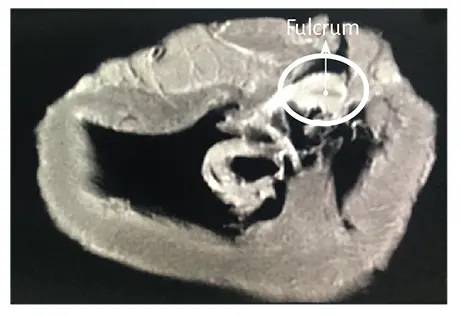
Figure 1.44. Nuclear magnetic resonance image in the bovine heart.
The pulmo-tricuspid cord is located in front of an area that surrounds the anterior two-thirds of the aortic annulus circumference in a U shape, and its open end (posterior) is occupied by the anterior cusp of the mitral valve. This tissue has a trigone at each end. The right fibrous trigone (central fibrous mass) is the most prominent and is placed between the tricuspid (right) and aortic (posterior) orifices and the pulmo-tricuspid cord (anterior) (Figure 1.9). The left less prominent trigone is located between the mitral valve orifice (left) and the aorta. There is no connective tissue in the continuity of the aortic orifice with the posterior cusp of the mitral valve, as laterally, the two fibrous masses extend by means of a band of connective tissue that partially surrounds the mitral valve orifice to progressively vanish. The septal cusp of the mitral valve is found as a wedge between both trigones and can be considered an extension of the atrial endocardium.
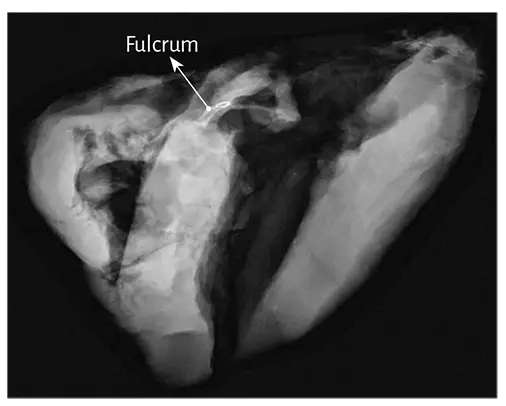
Figure 1.45. Radiologic image of the cardiac fulcrum with mammography technique in the bovine heart.
The cardiac fulcrum is adjacent and anteroinferior to the right trigone, constituting a solid, homogeneous structure to palpation with osseous, chondroid or tendinous histology. It is the site where the right segment and the ascending segment fibers attach, origin and end of the myocardial band. These insertions must be understood as the supporting point of the myocardial band to fulfill its hemodynamic function.
Regarding the study on this point of attachment which we have termed cardiac fulcrum, it must be considered as an organic structure that supports the band, allowing it to develop the necessary force for the fundamental rotational motions of the left ventricle. (131, 132) We should not forget that the heart pendulates within the thoracic cavity and its points of attachment are the origin and end of the myocardial muscle band, very close to each other at the root of the aorta and of the pulmonary artery. The origin of the band at the cardiac fulcrum is essentially a point of attachment for the right segment forming the band origin and also its end with the ascending segment. This anatomical site finds correspondence with the active motions of the cardiac cycle: left ventricular systole and suction. The site of the cardiac fulcrum in the rope model shown in Figure 1.46 simplifies the understanding of the myocardial band.
Figure 1.46. Site of the cardiac fulcrum in the myocardial band (rope model). The inset shows (in red) the schematic diagram of the rope model overlapping with the myocardium.
Conclusion . This anatomical description, both in bovid and human hearts, would put an end to the lack of support of the myocardial band to fulfill its twisting function, as the cardiac fulcrum (Figure 1.47) is the insertion point to achieve the necessary leverage, same as a muscle with its bone insertion. The observation of the tendinous cardiac fulcrum as a meeting point between the origin and end of the myocardial band would confirm its helical configuration. Moreover, by achieving energy dissipation, this nucleus would avoid the twisting motion of the ventricular helix from shifting to the aorta and hampering systolic ejection.
Читать дальше
